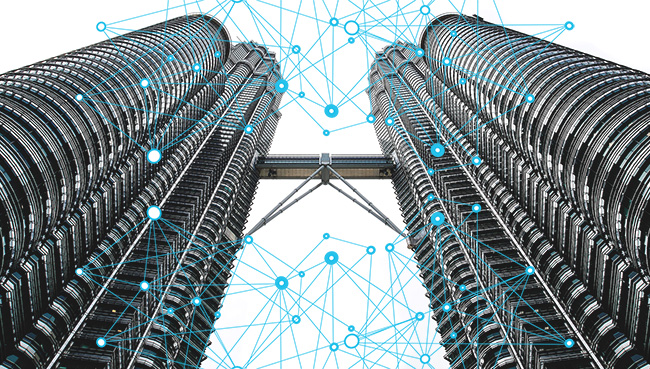While data enables innovation, its vulnerability continues to cause anxiety among IT leaders
Today’s technology landscape demands that companies determine how to manage and secure data in a connected ecosystem, as well as embrace it to create competitive advantages.

The key concerns for IT decision-makers in this environment are cybersecurity, the ability to upgrade infrastructure and optimizing IT operations, according to the 2019 Insight Intelligent Technology Index, an annual study of enterprises based in North America conducted by Insight Enterprises.
The study examined how companies manage digital innovation, the cloud and data center, the modern workplace and IT supply chain management. Fifty percent of IT say advanced analytics — enabled by artificial intelligence (AI), big data, machine learning and deep learning — have been critical to their transformation initiatives over the past two years. Looking ahead, 44% believe AI and machine learning will most significantly impact the future of IT.
Amid these advancements, security looms large as the top concern for IT professionals. In fact, when asked to volunteer any IT issue that keeps them up at night, security was the top answer for more than one in three respondents (35%).
“There is no greater reality check today in technology than how a business handles its data — it creates the most challenges and opportunities. While data enables innovation, its vulnerability continues to cause anxiety among IT leaders,” said Steve Dodenhoff, president, Insight North America.
“Companies have no choice but to launch transformative initiatives that allow them to improve how they access and leverage data across geographies, platforms and systems.”
Digital innovation is a business imperative; IT says they’re getting it right
Survey respondents generally agree data has great potential to transform business internally and publicly. Fifty-two percent report their primary objectives for digital innovation are improving business operations and, a close second, improving the customer experience and customer relationships (47%).
An overwhelming majority (89%) feel their digital innovation investments have been “moderately or very successful” — with success defined as improving their standing in the market and/or their financial performance.
However, there are still real challenges facing IT’s ability to successfully execute innovation initiatives. The top challenges are:
- Security and data privacy (48%)
- Upfront costs (38%)
- Expertise in new technology (32%)
- Infrastructure delays (31%)
“The new normal of IT directly impacting how business processes work has led to an incredible demand to stay ahead of the curve. You’d be hard pressed to find an enterprise that isn’t leaning on their IT teams to work through transformation issues,” said Stan Lequin, vice president and general manager, Digital Innovation, Insight North America.
All companies are becoming data-driven, but enabling it first means securing it
Of course, digital innovation is not possible unless the data enabling these transformations can be secured. IT professionals must determine where information lives, how to secure it and back it up, and when and where to move it to optimize its value.
This could be why 50% say the top challenge related to managing cloud spending is determining best-fit workloads for public, private and hybrid clouds.
Equally pressing is the importance of securing that data in a dispersed environment, with 43% citing this among the top three challenges they will face in the next three to five years as they contend with accelerated data growth. Modernizing data protection and recovery follows closely behind at 41%.
When managing overall IT operations globally, cybersecurity is by far the main challenge IT faces (47%). IT also say data security and protection is the greatest roadblock to managing global data center needs (33%).
“IT modernization is foundational to successful digital transformation,” said Shawn O’Grady, senior vice president and general manager, Cloud + Data Center Transformation, Insight.
“From assessing cloud and on-premises platforms required to support processing-intensive applications like AI and deep learning to acquiring new skills and processes required by digitally driven organizations, IT is evolving from the ground up. Data transformed into intelligent information derives greater returns for the business and creates seamless experiences for employees and clients.”
Subscription-based models and managed services propel modern workplaces
Changing how technology is procured and consumed is integral to equipping a workforce with the latest products, tools and services. In fact, 77% agree leasing models designating IT as an operating expense, rather than a capital expenditure, would help them better equip the workforce with modern solutions.
To that end,72% say their organizations consume at least some bundled products and services, and a vast majority (89%) plan to continue or increase their bundled consumption.
Additionally, IT leaders believe it is “very or extremely important” for corporate IT to resemble consumer experiences (77%). To achieve this, 71% say they implement programs allowing workers to choose their preferred device types; 58% say they let employees work from their personal devices.
Automation, e-procurement are key links to strengthen the IT supply chain
When it comes to procurement, 52% say their IT supply chain is “very or extremely optimized.” But nearly half (47%) say they want to improve how they use providers to streamline hardware lifecycle services. Similarly, 47% report the need to improve their e-procurement process, with only 16% having fully automated IT procurement.
Those who feel their IT supply chain is not adequately streamlined believe optimization would allow their workforce to be more efficient (63%), would free more time to focus on innovation projects that move the business forward (59%) and would decrease the time their teams spend on troubleshooting and break/fix work (54%).